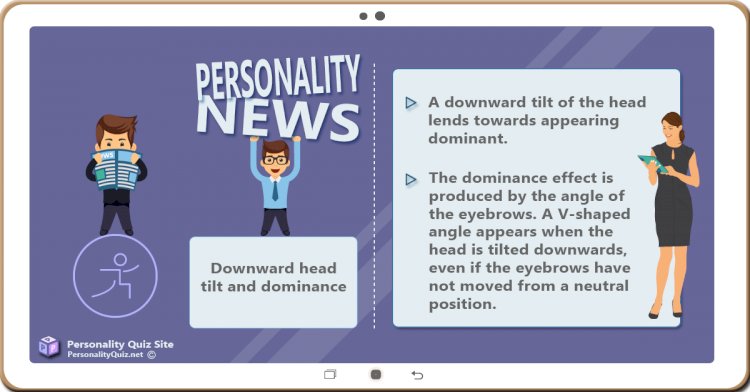Faces appear more dominant when the head is tilted down
The dominance effect is produced by the V-shaped angle of the eyebrows.

Main titles
- The head, and not just the face, can be used to draw inferences on how someone is feeling and thinking.
"We show that tilting one’s head downward systematically changes the way the face is perceived, such that a neutral face—a face with no muscle movement or facial expression—appears to be more dominant when the head is tilted down. This effect is caused by the fact that tilting one’s head downward leads to the artificial appearance of lowered and V-shaped eyebrows—which in turn elicit perceptions of aggression, intimidation, and dominance.” - Zachary Witkower and Jessica Tracy, University of British Columbia.
- The dominance effect is produced by the angle of the eyebrows. A V-shaped angle appears when the head is tilted downwards, even if the eyebrows have not moved from a neutral position.
“In other words, tilting the head downward can have the same effect on social perceptions as does lowering one’s eyebrows—a movement made by the corrugator muscle, known as Action Unit 4 in the Facial Action Coding System—but without any actual facial movement. Head tilt is thus an ‘action unit imposter’ in that it creates the illusory appearance of a facial muscle movement where none in fact exists.” - Zachary Witkower and Jessica Tracy, University of British Columbia.

 vneo
vneo 












